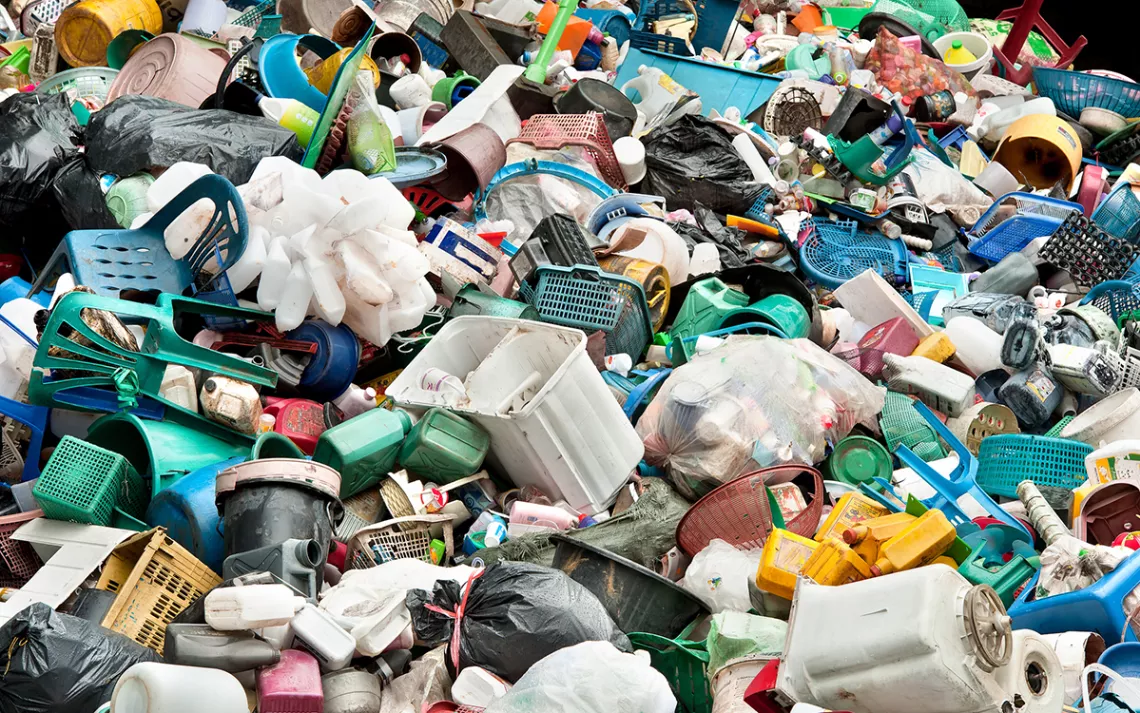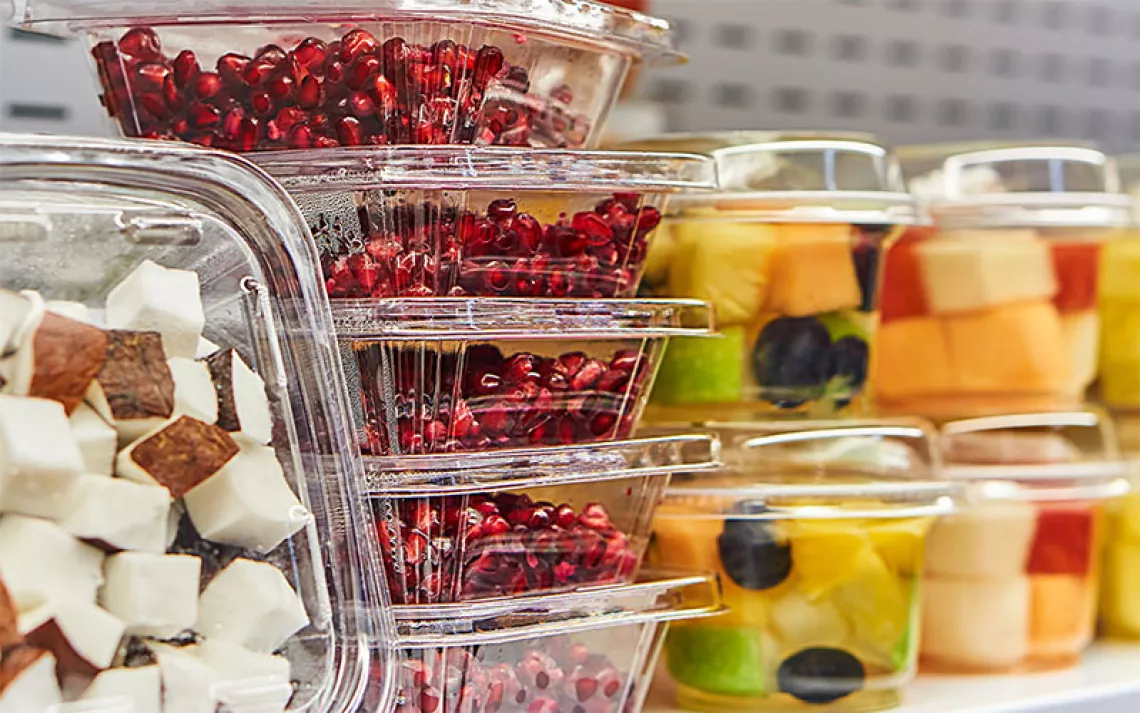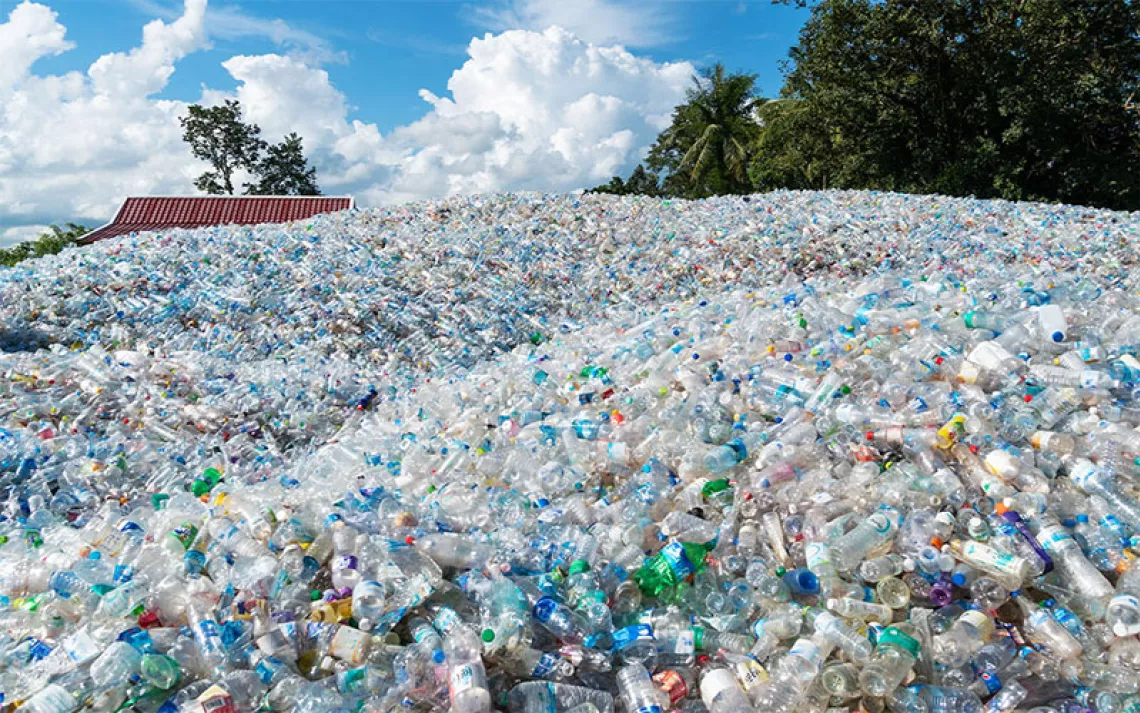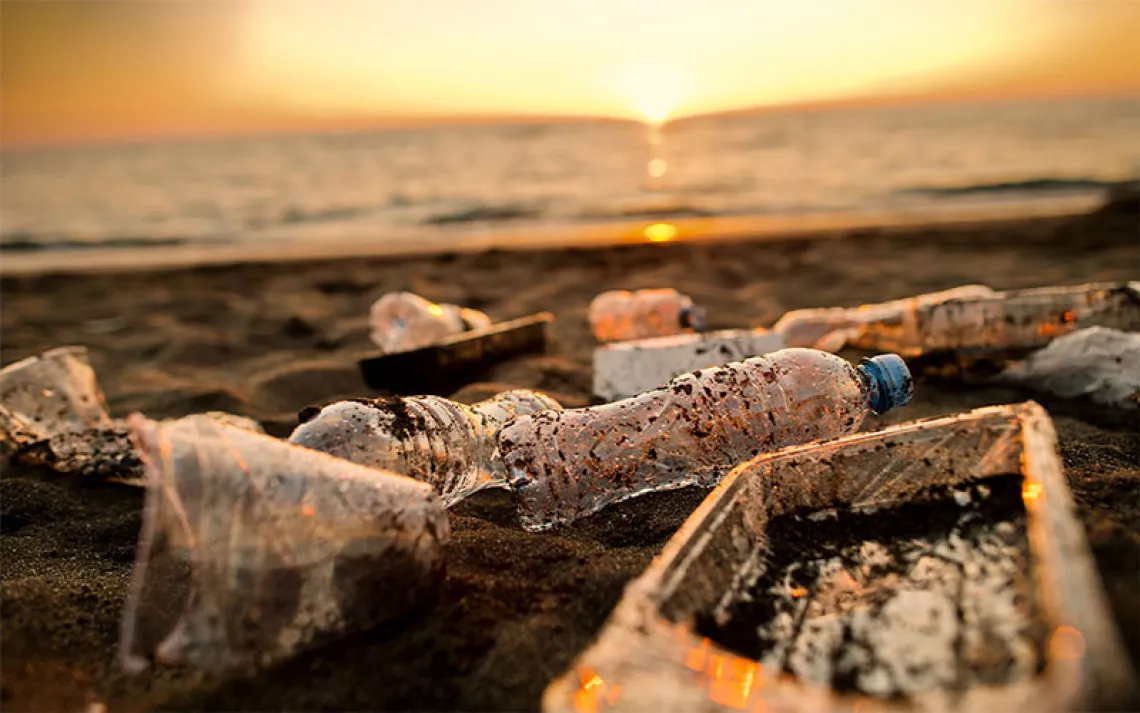California Reckons With the Hard Truth About Plastic Recycling
A package of new laws seeks to make the state's economy more circular

Photo by worradirek/iStock
No matter how faithfully you’ve been tossing your plastic waste into the recycling bin, the reality is that very little of it is getting recycled.
For decades, US cities and trash companies exported much of their plastic to China, which was desperate for raw materials. But in 2018, as part of a domestic crackdown on pollution, China banned imports of dirty foreign recyclables. As massive amounts of poor-quality recyclables were piling up at ports and warehouses, Sierra declared the US recycling system trash.
America and other waste exporters scrambled to find new dumping grounds for their garbage, including Malaysia, Thailand, and Vietnam, which have been overwhelmed with refuse. What is valuable gets recycled, but most is burned to generate energy. According to a report by the Center for International Environmental Law, in 2015, the incineration of plastic packaging produced 16 million metric tons of greenhouse gas emissions—equal to the exhaust of more than 3.4 million cars. The rest is discarded—tossed into rivers and streams that flow into the Pacific Ocean, where it joins a gyre of imperishable trash twice the size of Texas. Some (including former President Donald Trump) have blamed Southeast Asia for fouling the world’s oceans. But it’s our trash.
Now, California has taken an important first step in solving this insidious global problem. A cluster of bills known as the Circular Economy Package, signed by Governor Gavin Newsom in October, seeks to reduce the amount of single-use plastics we use and send overseas by, among other things, making it easier for consumers to identify what is (and isn’t) recyclable.
California exports roughly two-thirds of the plastic and paper that its residents toss into recycling bins. The 1989 California Integrated Waste Management Act requires cities and counties to cut the amount of trash they send to landfills in half by reducing waste, composting, and recycling. But there’s a big loophole: Shipping trash overseas counts as recycling—whether it is really recycled or not.
We now know that a good deal of it likely is not.
One of the bills in the package, Assembly Bill 881, closes that loophole. Now, unless a city or county can show that the waste it exports is destined for a recycling plant, it is considered the same as trash sent to a landfill. “This law will force us to be honest and transparent about what actually happens to our plastic waste,” Assemblywoman Lorena Gonzalez, a Democrat from San Diego and the bill’s author, said in a statement.
Perhaps the most prominent piece of legislation in the package is Senate Bill 343, titled “Truth in Labeling for Recyclable Materials,” written by state senator Ben Allen. A Democrat from Santa Monica, Allen became preoccupied with California’s recycling system when he discovered that the plastic sleeve his morning newspaper arrived in, which bore the triangular recycling symbol and which he would dutifully throw into his blue recycling bin every day, wasn’t actually getting recycled.
“It is technically recyclable under the best of conditions at 1,000 degrees in some lab in San Marino,” he said at the Assembly Natural Resources Committee hearing in June. “But they’re not recycled in the real world.”
Allen’s bill was based on the pretty good hunch that his situation is hardly unique. It turns out that at least 85 percent of single-use plastics in the state end up in a landfill. The problem, Allen realized, was one of truth in advertising, and his bill cracks down on the types of plastic packaging that can bear the triangular recycling symbol known as the “chasing arrows.”
One source of confusion is the resin identification code, the small raised number framed by the chasing arrows symbol found on the bottom of plastic packages. The numbers 1 through 6 each represent a specific type of plastic. The number 7 is a catch-all category that includes any plastic other than the first six. In the late 1980s, public opinion was turning against plastic, so the plastics industry launched a $50-million-a-year ad campaign promoting recycling. At the same time, it lobbied nearly 40 states to mandate that the resin identification codes appear on all plastic packaging. The average consumer saw the symbol and believed the package was recyclable.
The problem is that only plastics labeled 1 or 2—including water bottles, soda bottles, and milk jugs—are regularly recycled. And even then, a recent report by the environmental organization Greenpeace found that US recycling facilities are capable of processing less than a quarter of the country’s PET waste (plastic identification code: 1). The rest of the resin types are barely recycled at all.
SB 343 requires the California Department of Resources, Recycling, and Recovery, or CalRecycle, to compile a list of plastic products and packaging that can bear the chasing arrows. To make the list, a material has to meet two criteria: It must be collected by recycling programs that collectively serve at least 60 percent of the state population; from there, it must be sortable by large recycling plants that serve at least 60 percent of state recycling programs. In this regard, SB 343 is relatively clear-eyed on the California recycling system’s capabilities. It’s not that a material that doesn’t make the list isn’t technically recyclable. It’s that a mature end market for that material does not, at the moment, exist. It won’t be recycled.
Suffice it to say, the law has not been enthusiastically embraced by the plastics industry, whose advocates argue that excluding some materials from the state recyclable list will scare away investments in recycling them, forever consigning them to the landfill. “We don’t want to stop materials that have growing markets but that might not be able to meet the threshold set in the legislation,” said Dylan de Thomas, vice president of external affairs for the Recycling Partnership, a nonprofit funded by some of the world’s largest plastic users, including the Coca-Cola Company, Unilever, and Amazon.
When I posed this concern to Allen, he was steadfast: “If [plastics] are not actually getting recycled, then they’re not going to make the cut,” he said. “We don’t need the nonrecyclable plastics in the bins.”
In the eyes of the plastics industry, everything is potentially recyclable. But here’s the rub: The simple ability to recycle something is not the same as creating a truly circular economy.
Take, for example, polypropylene, a rigid plastic used to make yogurt tubs and medicine bottles but also gas cans and casings for car batteries. In July, to the frustration of plastics advocates, CalRecycle decided not to include polypropylene (resin identification code: 5) on its statewide recyclable list. At the moment, there are less than half a dozen facilities in the United States capable of recycling polypropylene. Most are east of the Mississippi, and the largest almost exclusively turns the recycled plastic into paint buckets, which are themselves notoriously difficult to recycle.
“Those paint buckets are just one stop away from a landfill,” said Martin Bourque, the executive director of the Ecology Center, the nonprofit that handles curbside recycling for Berkeley, California. “That type of downcycling, when it offsets existing use of petrochemicals, is better than a landfill. But it’s not circular. They used to make paint buckets out of metal. Now they’re made of plastic. Is that keeping oil in the ground?”
Rather than make it so that we can recycle everything, Bourque said that a more sustainable option would be to produce packaging with materials we know to be recyclable: cardboard, glass, aluminum cans, and the few plastics in the first two resin identification code families. Another bill proposed by Allen, Senate Bill 54, would have done just that. The bill didn’t make it out of the state legislature, but nearly 1 million voters signed a petition to put the measure on the statewide ballot in 2022. The bills Newsom signed are comparatively small steps in the effort to curb plastic pollution. But taken together, they could shift consumer behavior around recycling—and put pressure on corporations to come up with real solutions to their plastic waste.
“Companies that rely on plastic packaging see a marketing and public relations problem. They have a brand identity problem,” said Bourque. “Environmentalists see a social justice problem and a toxicity problem and a pollution problem. It’s not surprising that our solutions are different.”
 The Magazine of The Sierra Club
The Magazine of The Sierra Club



